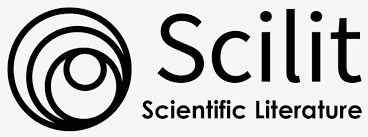Analisis Serangan Web Defacement pada Situs Web Pemerintah Menggunakan ELK Stack
DOI:
https://doi.org/10.14421/jiska.2019.41-01Abstract
Web defacement merupakan serangan yang dikategorikan sebagai serangan siber yang berpotensi. Dampak dari serangan web defacement adalah proses pengembalian ke kondisi semula yang memerlukan mitigasi khusus. Pemantauan serangan web defacement dapat dilakukan dari dua sisi, yaitu sisi internal dan eksternal. Pada penelitian ini pemantauan dan analisis serangan web defacement dari sisi eksternal. Oleh sebab itu diperlukan aplikasi khusus untuk mendapatkan informasi dari OSINT Source penyedia informasi serangan web defacement yang merupakan hasil laporan dari peretas. Informasi yang didapatkan selanjutnya diolah menggunakan ELK Stack untuk mempermudah analisis dalam bentuk visualisasi pada Dashboard.Web defacement merupakan serangan yang dikategorikan sebagai serangan siber yang berpotensi. Dampak dari serangan web defacement adalah proses pengembalian ke kondisi semula yang memerlukan mitigasi khusus. Pemantauan serangan web defacement dapat dilakukan dari dua sisi, yaitu sisi internal dan eksternal. Pada penelitian ini pemantauan dan analisis serangan web defacement dari sisi eksternal. Oleh sebab itu diperlukan aplikasi khusus untuk mendapatkan informasi dari OSINT Source penyedia informasi serangan web defacement yang merupakan hasil laporan dari peretas. Informasi yang didapatkan selanjutnya diolah menggunakan ELK Stack untuk mempermudah analisis dalam bentuk visualisasi pada Dashboard.
References
Asosiasi Penyelenggara Jasa Internet Indonesia. (2019). Penetrasi dan Perilaku Pengguna Internet Indonesia 2018. Jakarta.
Hariyadi, D., Winarno, W. W., & Luthfi, A. (2016). Analisis Konten Dugaan Tindak Kejahatan Dengan Barang Bukti Digital Blackberry Messenger. Teknomatika STMIK Jenderal Achmad Yani Yogyakarta, 9(1), 81–89. Diambil dari http://teknomatika.stmikayani.ac.id/wp-content/uploads/2017/01/Teknomatika-9-1-8-Hariyadi-Analisis-Barang-Bukti-Digital-BBM.pdf
Indonesia Security Incident Response Team on Infrastructure / Coordination Center. (2019). Indonesia Cyber Security Monitoring Report 2018. Jakarta.
Jain, A., & Kasbe, A. (2018). Fake News Detection. 2018 IEEE International Students’ Conference on Electrical, Electronics and Computer Science, SCEECS 2018, 1–5. https://doi.org/10.1109/SCEECS.2018.8546944
Mantra, I. (2015). Indonesia Web Defacement Attacks Analysis for Anti Web Defacement. Jurnal TICOM, 3(3).
Mehak, S., Zafar, R., Aslam, S., & Bhatti, S. M. (2019). Exploiting Filtering Approach with Web Scrapping for Smart Online Shopping. 2019 2nd
International Conference on Computing, Mathematics and Engineering Technologies, iCoMET 2019, 1–5. https://doi.org/10.1109/ICOMET.2019.8673399
Mishra, D., & Pujari, N. (2011). Cross-domain query answering: Using Web scrapper and data integration. 2011 2nd International Conference on Computer and Communication Technology, ICCCT-2011, 27–32. https://doi.org/10.1109/ICCCT.2011.6075193
Mockapetris, P. V. (1987). RFC 1035: Domain Names - Implementation and Specification.
Nastiti, F. E., Hariyadi, D., & Fazlurrahman. (2019). TelegramBot : Crawling Data Serangan Malware dengan Telegram. Journal of Computer Engineering System and Science, 4(1). https://doi.org/10.24114/cess.v4i1.11436
Pengelola Nama Domain Internet Indonesia. (n.d.). Tentang PANDI. Diambil 1 Februari 2019, dari https://pandi.id/profil/tentang-pandi/
Prakash, T., Kakkar, M., & Patel, K. (2016). Geo-Identification of Web Users through Logs using ELK Stack. In Proceedings of the 2016 6th International Conference - Cloud System and Big Data Engineering, Confluence 2016 (hal. 606–610). https://doi.org/10.1109/CONFLUENCE.2016.7508191
Romagna, M., & Hout, N. J. Van Den. (2017). Hacktivism and website defacement : Motivations, capabilities and potential threats. 27th Virus Bulletin International Conference, (October).
Wang, M., Zhang, Z., & Xu, H. (2018). DNS Configurations and Its Security Analyzing via Resource Records of the Top-Level Domains. In Proceedings of the International Conference on Anti-Counterfeiting, Security and Identification, ASID (Vol. 2017-Octob, hal. 21–25). https://doi.org/10.1109/ICASID.2017.8285736
Downloads
Published
How to Cite
Issue
Section
License
Authors who publish with this journal agree to the following terms as stated in http://creativecommons.org/licenses/by-nc/4.0
a. Authors retain copyright and grant the journal right of first publication with the work simultaneously licensed under a Creative Commons Attribution License that allows others to share the work with an acknowledgement of the work's authorship and initial publication in this journal.
b. Authors are able to enter into separate, additional contractual arrangements for the non-exclusive distribution of the journal's published version of the work (e.g., post it to an institutional repository or publish it in a book), with an acknowledgement of its initial publication in this journal.
c. Authors are permitted and encouraged to post their work online (e.g., in institutional repositories or on their website) prior to and during the submission process, as it can lead to productive exchanges, as well as earlier and greater citation of published work.









